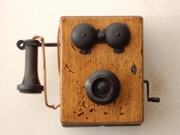|
|
| News for nurses providing hospice and palliative care | SIGN UP ⋅ SHARE |
|
|
 
Patients in skilled nursing facilities need greater access to hospice and palliative care to reduce the risk of being trapped in a "rehabbed to death" cycle, according to an article in the Journal of the American Geriatrics Society. Researchers said the Patient Driven Payment Model should be used to support palliative care. |
|
|
Join CAPC's interactive workshop for practical, evidence-based guidance on using buprenorphine to manage pain in patients with living with a serious illness and substance use disorder. Open to all, CEs available.
|
|
|
| ADVERTISEMENT |  |
|
 
| Hospice & Palliative Care |
|
Rich Gruber, a volunteer with Hospice of Warren County in Pennsylvania, has honored 253 veterans over the past 13 years through pinning ceremonies that include military branch-specific pins and personal touches reflecting each veteran's service history. "It is a true privilege to honor our veterans," Gruber says. Staff social workers support the ceremonies.
|
|
|
Greater access to pediatric hospice and respite services could improve outcomes, as families face challenges supporting a growing population of medically fragile children, experts say. "Many providers simply don't know that pediatric respite programs exist," says Shekinah Eliassen, CEO of George Mark Children's House. "Increasing awareness among referring physicians, insurers and hospital systems is essential if we want families to know that help -- and hope -- are available."
|
|
A study published in JAMDA -- The Journal of the Post-Acute and Long-Term Care Medical Association found significant opportunities to improve end-of-life care in assisted living communities, especially through better processes and partnerships with hospice providers. The study found that almost 30% of communities lacked clear policies for retaining residents needing end-of-life care, and less than one-third of administrators rated the quality of dying as excellent. |
|
| |
 |
| (Christianphotographer/Getty Images) |
A "wind phone" has been installed at Life Forest, a cemetery for cremated remains in Hillsborough, N.H., providing a space for people to process grief. The concept originated in Japan in 2010, when Itaru Sasaki installed a disconnected phone booth to speak with his late cousin, and the idea spread after a devastating earthquake and tsunami in 2011.
A carpenter's view: "I kept on thinking of it as building an altar. It meant, for me, that I was going to make all the wood look as beautiful as I could." -- Gary Seldon, on the design of the Life Forest wind phone, which is made of cedar with a metal roof and lattice sides for privacy.
|
|
|
|
|
Harness dormant customer data goldmines trapped within disconnected systems. A trusted identity setup is key for a panoramic perspective. Unite your information to cultivate enhanced growth, vital insights, and a strategic edge. Download the whitepaper now. |
|
|
|
| ADVERTISEMENT |  |
|
 
| ICYMI: The Most Popular Stories From Our Last Issue |
|
|
|
Retailers face labor shortages, rising customer expectations and unpredictable supply chains, which drive them to reinvent their operations. With mobile technology, retailers can provide real-time visibility, contactless payments, digital receipts and loyalty programs. This paper explores how mobile solutions transform retail operations and engage consumers. |
|
|
|
|
|
 
| Free eBooks and Resources |
|
 
| Nursing & Professional Development |
| |
 |
| (The Good Brigade/Getty Images) |
An international study found that better staffing and work environments for nurses were associated with improvements in burnout and job dissatisfaction among physicians. The study, published in JAMA Network Open, surveyed more than 15,000 nurses and 6,400 physicians in the US and six European countries. In the US, a 10% increase in nurses' assessment of their work environments was associated with equal or greater improvements in measures of physician wellness and satisfaction. Double the impact: "Our study provides evidence that investing in nurses is a 'two-for-one' solution," said researcher Linda Aiken, founding director of Penn Nursing's Center for Health Outcomes and Policy Research. | | | | | | |
